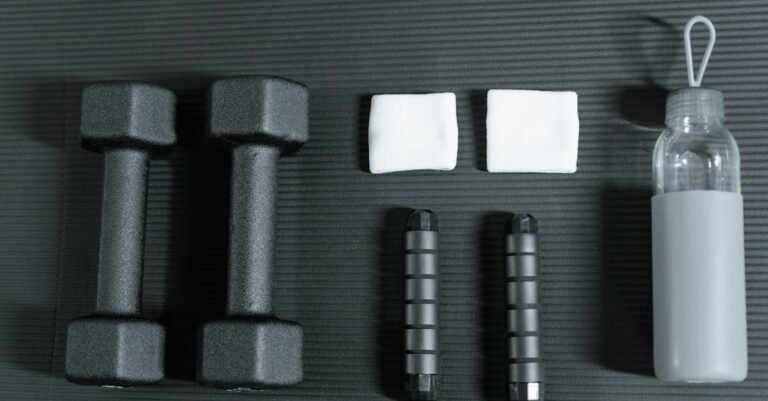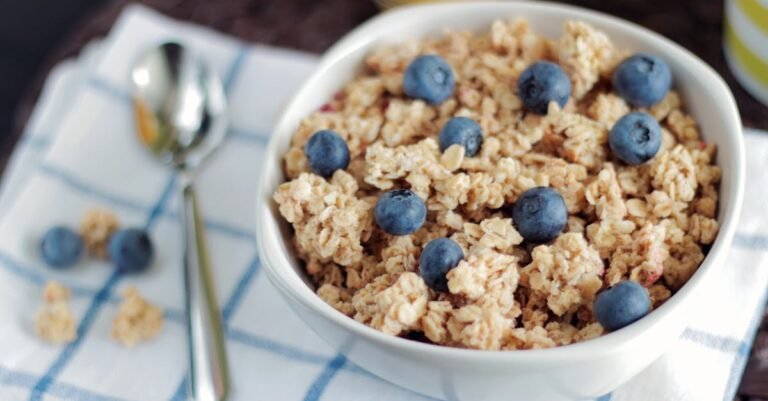Table Of Content
- Understanding Macronutrients For Fitness Goals
- What Exactly Are Macronutrients Anyway?
- Protein Power: The Building Blocks of Muscle
- Carbohydrates: Your Body’s Preferred Fuel Source
- Fabulous Fats: More Than Just Energy Storage
- Tailoring Macronutrients to Your Fitness Goals
- Calculating Your Macronutrient Needs: Getting Personal
- Practical Tips for Tracking and Hitting Your Macros
- Conclusion: Putting Macro Knowledge into Action
- Frequently Asked Questions (FAQs)
Understanding Macronutrients For Fitness Goals
So, you’re hitting the gym, putting in the work, but maybe not seeing the results you crave? Whether you want to build muscle like a superhero, shed some extra weight, or just perform better in your chosen sport, what you eat plays a massive role. And when we talk about food for fitness, the conversation often circles back to three key players: macronutrients. Heard the term “macros” thrown around but not entirely sure what it means or why you should care? You’re in the right place!
Think of your body like a high performance vehicle. You wouldn’t just pour any old sludge into the tank and expect it to run smoothly, right? Similarly, fueling your body correctly is essential for reaching your fitness destination. Understanding macronutrients protein, carbohydrates, and fats is like learning the difference between regular gasoline, rocket fuel, and premium engine oil. Each has a unique job, and getting the balance right is key to unlocking your potential. Let’s dive deep and demystify the world of macros together!
What Exactly Are Macronutrients Anyway?
Alright, let’s break it down. “Macro” simply means large. So, macronutrients are the nutrients your body needs in relatively large amounts to function properly. They are the primary providers of energy (calories) and the essential building blocks for growth, repair, and countless bodily processes. Unlike micronutrients (vitamins and minerals), which we need in smaller quantities, macros form the bulk of our diet.
The Big Three: Protein, Carbs, and Fats
There are three main macronutrients we need to focus on:
- Protein: Often hailed as the king for muscle growth, protein is vital for building and repairing tissues, producing enzymes and hormones, and supporting immune function. It provides 4 calories per gram.
- Carbohydrates: These are your body’s preferred and most readily available source of energy. They fuel your workouts, power your brain, and get stored for later use. Like protein, carbs provide 4 calories per gram.
- Fats: Don’t let the name scare you! Fats are crucial for energy storage, hormone production, nutrient absorption (especially fat-soluble vitamins like A, D, E, and K), and protecting your organs. Fats are the most energy dense macro, packing 9 calories per gram.
Water and fiber are also crucial, but they don’t provide calories in the same way, so they aren’t typically counted within these core three “macros” when people discuss dietary ratios for fitness goals.
Protein Power: The Building Blocks of Muscle
If you’ve spent any time in fitness circles, you’ve heard about protein. It’s the poster child for muscle gain, recovery, and feeling full. But why is it so important, and how much do you actually need?
Why Protein is Crucial for Fitness
Imagine your muscles are like brick walls. When you exercise, especially with resistance training, you create tiny micro tears in those muscle fibers like little cracks in the wall. Protein provides the amino acids the “bricks and mortar” needed to repair these tears and, crucially, build the muscle back stronger and bigger. This process is called muscle protein synthesis (MPS). Without adequate protein, your body can’t effectively repair and build muscle tissue, hindering your progress.
But protein isn’t just for bodybuilders! It’s vital for:
- Recovery: Helps muscles repair after any type of strenuous activity.
- Satiety: Keeps you feeling fuller for longer, which can be incredibly helpful for managing appetite during fat loss phases.
- Maintaining Muscle Mass: Especially important when you’re in a calorie deficit trying to lose fat. Eating enough protein helps ensure you lose fat, not precious muscle.
- Overall Health: Essential for enzymes, hormones, immune cells, hair, skin, and nails.
How Much Protein Do You Really Need?
This is where things get personal. The standard Recommended Dietary Allowance (RDA) is 0.8 grams of protein per kilogram of body weight (or about 0.36 grams per pound). However, this is generally considered the minimum to prevent deficiency in sedentary individuals. If you’re active and have specific fitness goals, you’ll likely need more.
Common recommendations for active individuals aiming for muscle gain or fat loss often fall within the range of:
- 1.6 to 2.2 grams per kilogram of body weight (approx. 0.7 to 1.0 grams per pound).
So, for a 150 pound (68kg) person, this would mean roughly 105 to 150 grams of protein per day. It’s usually best to start somewhere in the middle of the recommended range and adjust based on your results, recovery, and appetite. Spreading your protein intake relatively evenly throughout the day (e.g., 20-40 grams per meal/snack) can also be beneficial for maximizing MPS.
Best Protein Sources for Your Plate
Variety is key! Aim for a mix of high quality protein sources:
- Lean Meats: Chicken breast, turkey breast, lean beef (sirloin, tenderloin), pork loin.
- Fish: Salmon, tuna, cod, tilapia, shrimp. Fatty fish like salmon also provide healthy omega 3 fats.
- Eggs: Whole eggs are a fantastic source of protein and nutrients (don’t ditch the yolk!).
- Dairy: Greek yogurt, cottage cheese, milk, cheese. Choose lower fat options if managing calories.
- Legumes: Lentils, beans (black, kidney, chickpeas), peas. Great plant based options.
- Soy Products: Tofu, tempeh, edamame. Complete plant based proteins.
- Protein Powders: Whey, casein, soy, pea, or rice protein can be convenient supplements, especially post workout or to help meet higher targets.
Carbohydrates: Your Body’s Preferred Fuel Source
Carbohydrates often get a bad rap, blamed for weight gain and health issues. But let’s set the record straight: carbs are NOT the enemy! They are your body’s primary and most efficient source of energy, especially crucial for powering your workouts and daily activities.
Simple vs. Complex Carbs
Not all carbs are created equal. Understanding the difference is key to using them effectively:
- Simple Carbohydrates: These are sugars that are quickly digested and absorbed, providing a rapid burst of energy. Think things like table sugar, honey, fruit juice, candy, and refined grains (white bread, white pasta). While they have their place (like quick fuel during intense exercise), relying heavily on them can lead to energy crashes and cravings.
- Complex Carbohydrates: These are made up of longer chains of sugar molecules, often found alongside fiber and nutrients. They take longer to digest, leading to a slower, more sustained release of energy and helping to stabilize blood sugar levels. Examples include whole grains (oats, brown rice, quinoa), starchy vegetables (sweet potatoes, potatoes, squash), legumes (beans, lentils), and whole fruits.
For general health and sustained energy, prioritizing complex carbohydrates is usually the way to go. They provide fuel plus valuable fiber, vitamins, and minerals.
Timing Your Carbs for Optimal Performance
While total daily carb intake matters most, timing can give you an edge, especially for performance:
- Pre Workout: Consuming carbohydrates (mostly complex, maybe with a small amount of simple) 1-3 hours before exercise tops off your glycogen stores (your body’s stored form of carbs in muscles and liver), ensuring you have readily available energy for your session.
- Intra Workout (During): For long (> 60-90 minutes) or very intense workouts, easily digestible simple carbs (like sports drinks or gels) can help maintain blood glucose levels and delay fatigue.
- Post Workout: Consuming carbs alongside protein after training helps replenish depleted glycogen stores and supports recovery. The “anabolic window” isn’t as strict as once thought, but getting carbs in within a few hours post exercise is generally beneficial.
Don’t Fear the Carbs: Finding the Right Balance
How many carbs do you need? It depends heavily on your activity level, goals, and individual tolerance. Someone training for a marathon will need significantly more carbs than someone doing light yoga a few times a week. Similarly, carb intake might be adjusted lower for fat loss and higher for muscle gain or performance.
Instead of eliminating carbs, focus on:
- Choosing mostly complex, whole food sources.
- Adjusting your intake based on your energy needs and training demands.
- Paying attention to how different amounts and types of carbs make you feel and perform.
Carbs fuel performance and recovery; mastering them is key to reaching your fitness peak.
Fabulous Fats: More Than Just Energy Storage
Fat! It’s another nutrient that’s been unfairly demonized in the past. We went through low fat crazes, but thankfully, science has shown us that dietary fats are not only okay but absolutely essential for health and optimal body function, including supporting your fitness goals.
The Good, The Bad, and The Necessary Fats
Like carbs, fats aren’t monolithic. They come in different forms, impacting our health differently:
- Unsaturated Fats (The “Good” Fats): These are generally considered heart healthy and include:
- Monounsaturated Fats: Found in olive oil, avocados, nuts (almonds, cashews), and seeds.
- Polyunsaturated Fats: Include Omega 3 and Omega 6 fatty acids. Omega 3s (found in fatty fish like salmon, flaxseeds, chia seeds, walnuts) are particularly beneficial for reducing inflammation. Omega 6s are found in vegetable oils (corn, soybean), nuts, and seeds. Most Western diets have too many Omega 6s relative to Omega 3s, so focusing on increasing Omega 3 intake is often recommended.
- Saturated Fats: Found primarily in animal products (fatty meats, butter, cheese, full fat dairy) and some plant oils (coconut oil, palm oil). While not inherently “bad” in moderation, excessive intake has been linked to increased risk of heart disease for some individuals. Quality and context matter here.
- Trans Fats (The “Bad” Fats): These are artificially created fats (through hydrogenation) found in many processed foods, fried foods, and baked goods. They offer no health benefits and actively harm cardiovascular health. Avoid these as much as possible (look for “partially hydrogenated oils” on ingredient lists).
Focusing on incorporating plenty of unsaturated fats while managing saturated fat intake and strictly avoiding artificial trans fats is the general guideline for health.
Fats for Hormones, Health, and Fitness
Why are fats so crucial, especially when you’re active?
- Hormone Production: Dietary fat, particularly saturated fat and cholesterol, is essential for producing vital hormones, including testosterone and estrogen, which play key roles in muscle growth, energy levels, and overall well being. Chronically low fat diets can negatively impact hormone balance.
- Nutrient Absorption: Vitamins A, D, E, and K are fat soluble, meaning they require fat to be properly absorbed and utilized by your body.
- Energy Source: While carbs are the preferred fuel, fat is a very efficient and dense energy source, particularly important for lower intensity, longer duration activities and during periods when carbohydrate availability is low.
- Cell Structure: Fats form the membranes of every cell in your body.
- Inflammation Regulation: Omega 3 fatty acids have powerful anti inflammatory properties, which can aid in recovery and reduce exercise induced soreness.
Don’t shy away from healthy fats! They are vital players in your overall health and fitness journey. A typical recommendation is for fats to make up 20-35% of your total daily calories, prioritizing unsaturated sources.
Tailoring Macronutrients to Your Fitness Goals
Okay, we’ve covered the basics of protein, carbs, and fats. Now, how do we put this knowledge into practice for your specific goals? The ideal macro split isn’t one size fits all; it shifts depending on whether you’re primarily aiming for muscle gain, fat loss, or enhanced performance.
Macros for Muscle Gain: Building That Physique
To build muscle (hypertrophy), you need two main things from your diet: sufficient protein and enough total calories (a calorie surplus).
- Protein: As discussed, aim for the higher end of the range, typically 1.6-2.2g per kg (0.7-1.0g per lb) of body weight. This provides the building blocks for new muscle tissue.
- Calories: You need to consume slightly more calories than you burn (a modest surplus of 250-500 calories per day is a common starting point) to provide the energy needed for the demanding process of muscle building.
- Carbs & Fats: After setting protein, the remaining calories are allocated to carbs and fats. Carbs are crucial for fueling intense workouts needed to stimulate muscle growth and for replenishing glycogen. Fats support hormone levels vital for growth. A common approach is a moderate carb, moderate fat split, but individual preference and tolerance play a role. You might prioritize carbs slightly more to fuel hard training.
Example Range: Protein: 25-35%, Carbs: 40-60%, Fats: 15-30%
Macros for Fat Loss: Shedding Pounds Smartly
Losing fat requires a calorie deficit meaning consuming fewer calories than you burn. Macros play a critical role in ensuring you lose primarily fat while preserving muscle mass and managing hunger.
- Protein: Keeping protein high (often similar to or even slightly higher than muscle gain phases, potentially 1.8-2.7g per kg or 0.8-1.2g per lb) is paramount. It helps preserve muscle tissue, which is metabolically active, and increases satiety, making it easier to stick to a calorie deficit.
- Calories: A moderate deficit (e.g., 15-25% below maintenance calories, or roughly a 500 calorie deficit per day) is usually recommended for sustainable fat loss that minimizes muscle loss.
- Carbs & Fats: With protein set and calories reduced, carbs and fats will naturally be lower. The specific split can vary. Some prefer lower carb approaches to manage insulin and appetite, while others feel better maintaining moderate carbs for energy, reducing fats more significantly. The key is finding a sustainable balance that keeps you energized for workouts and manages hunger. Sufficient fat intake (at least 20% of calories) is still important for hormonal health.
Example Range: Protein: 30-40%, Carbs: 30-50%, Fats: 20-30%
Macros for Performance: Fueling Your Engine
For athletes focused on performance (endurance, strength, power), energy availability is king. Carbs often take center stage.
- Carbohydrates: Intake needs to match the demands of training and competition. Endurance athletes, especially, require high carbohydrate intake (potentially 6-12g per kg or more) to keep glycogen stores full and fuel prolonged activity. Carb timing around training becomes more critical.
- Protein: Sufficient protein (1.2-2.0g per kg or 0.5-0.9g per lb) is needed for muscle repair and adaptation, but often doesn’t need to be as high as in dedicated muscle gain or fat loss phases unless concurrent goals exist.
- Fats: Essential for overall health and hormone function, typically making up the remainder of calories after protein and carb needs are met (around 20-35%). Extremely low fat diets can hinder performance and recovery.
- Calories: Generally need to be at maintenance or slightly above to support high training volumes and recovery.
Example Range (highly variable based on sport): Protein: 15-25%, Carbs: 50-70%+, Fats: 15-30%
Calculating Your Macronutrient Needs: Getting Personal
Okay, theory is great, but how do you figure out *your* specific numbers? It involves a few steps, usually starting with estimating your total daily energy expenditure (TDEE) the number of calories you burn per day.
Tools and Methods: Apps, Calculators, and Formulas
- Estimate Your TDEE: Online TDEE calculators are a popular starting point. They typically use formulas like the Mifflin-St Jeor or Harris-Benedict equation based on your age, sex, height, weight, and activity level. Be honest about your activity level!
- Adjust for Your Goal:
- Fat Loss: Subtract 15-25% from your TDEE (e.g., 500 calories).
- Muscle Gain: Add 10-20% to your TDEE (e.g., 250-500 calories).
- Maintenance/Performance: Aim for your TDEE (adjust based on training demands).
- Set Your Protein Target: Based on your goal (e.g., 1.6-2.2g per kg), calculate your daily protein grams. Remember, protein has 4 calories per gram.
- Set Your Fat Target: Choose a percentage of your total goal calories (e.g., 20-35%). Remember, fat has 9 calories per gram.
- Calculate Your Carbohydrate Target: Subtract the calories from your protein target and your fat target from your total daily calorie goal. Divide the remaining calories by 4 (since carbs have 4 calories per gram) to get your daily carbohydrate grams.
Example: A 180lb (81.8kg) person with a TDEE of 2800 calories wants to gain muscle (target ~3100 calories).
- Protein: 1.8g/kg * 81.8kg = ~147g protein. (147g * 4 cal/g = 588 calories)
- Fat: Let’s aim for 25% of calories. 0.25 * 3100 cal = 775 calories. (775 cal / 9 cal/g = ~86g fat)
- Carbs: 3100 total cal – 588 protein cal – 775 fat cal = 1737 carb calories. (1737 cal / 4 cal/g = ~434g carbs)
Resulting Macros: ~147g Protein / 434g Carbs / 86g Fat
Many apps (like MyFitnessPal, Cronometer, MacroFactor) can help automate these calculations and make tracking easier.
Adjusting As You Go: Listening to Your Body
These calculations are just starting points! They are estimations. The most crucial part is monitoring your progress and adjusting based on real world results and how you feel.
- Track Your Progress: Monitor your weight, body measurements, strength gains, energy levels, and how you feel during workouts.
- Be Patient: Give your initial numbers a few weeks (2-4) before making drastic changes.
- Make Small Adjustments: If progress stalls (e.g., not losing weight, not gaining muscle), make small tweaks to your calories (usually by adjusting carbs or fats slightly) rather than overhauling everything at once.
- Listen to Biofeedback: How’s your energy? Your sleep? Your hunger? Your performance in the gym? These are valuable clues. If you feel constantly drained or ravenous, your macros might need adjustment, even if the scale is moving in the “right” direction.
Your ideal macros aren’t set in stone; they evolve as your body, activity level, and goals change.
Practical Tips for Tracking and Hitting Your Macros
Knowing your numbers is one thing; consistently hitting them is another. Here are some tips to make tracking macros less daunting:
- Use a Tracking App: Apps make logging food incredibly efficient with barcode scanners and large databases.
- Get a Food Scale: Accuracy is key, especially initially. Weighing your food (especially calorie dense items like oils, nuts, rice, meat) removes guesswork. Volume measurements (cups, tablespoons) can be surprisingly inaccurate.
- Plan Ahead: Meal prepping or at least planning your meals for the day or week ahead makes hitting your targets much easier than trying to piece it together on the fly.
- Focus on Whole Foods: Basing your diet around single ingredient, whole foods makes tracking simpler (it’s easier to track chicken breast, broccoli, and rice than a complex casserole).
- Learn Common Portion Sizes: Over time, you’ll get better at estimating portion sizes, but start with weighing.
- Don’t Aim for Perfection: Hitting your macros exactly every single day is unrealistic and unnecessary. Aim for consistency within a reasonable range (e.g., +/- 5-10 grams for each macro). Stressing about being 2 grams over on fat isn’t productive.
- Find Macro Friendly Swaps: Craving pizza? Look for lower calorie bases or toppings. Want something sweet? Greek yogurt with berries and a drizzle of honey can hit the spot while contributing to your protein goal.
- Be Patient with Yourself: There’s a learning curve! Don’t get discouraged if you miss your targets some days. Just get back on track with your next meal. Consistency over time is what matters most.
Conclusion: Putting Macro Knowledge into Action
Whew! We’ve covered a lot of ground, from defining macronutrients to understanding their specific roles, tailoring them to your goals, calculating your needs, and practical tracking tips. Remember, understanding protein, carbohydrates, and fats isn’t about obsessive restriction or labeling foods as “good” or “bad.” It’s about empowerment. It’s about understanding how different foods fuel your body and how you can leverage that knowledge to achieve your specific fitness aspirations whether that’s building strength, improving endurance, changing your body composition, or simply feeling more energetic.
Think of macros as tools in your fitness toolkit. Learning how to use them effectively allows you to build the body and performance you desire. Start with the basics, calculate your estimated needs, focus on whole foods, track consistently (but not obsessively!), and most importantly listen to your body and adjust as needed. It’s a journey of experimentation and learning what works best for you. Now go forth and fuel your greatness!
Frequently Asked Questions (FAQs)
1. Do I absolutely *have* to track macros to get results?
Not necessarily! You can achieve great results by focusing on mindful eating, portion control, and prioritizing whole foods. However, tracking macros provides a level of precision and data that can be incredibly helpful for breaking through plateaus, optimizing results for specific goals (like competitive bodybuilding or significant fat loss), and understanding exactly how your diet impacts your body and performance. It’s a powerful tool, but not the only one.
2. Is it better to follow a low carb or low fat diet for fat loss?
Neither approach is universally “better.” The most effective diet for fat loss is one that creates a sustainable calorie deficit while providing adequate protein and micronutrients. Both low carb and low fat approaches can achieve this. The best choice depends on individual preference, adherence, tolerance, and how each approach affects your energy levels, hunger, and overall well being. Some people thrive on lower carbs, others feel better with lower fats. Experimentation might be needed.
3. What about alcohol? How does it fit into macros?
Alcohol provides calories (about 7 calories per gram) but isn’t considered a macronutrient because it doesn’t provide essential nutrients. If you choose to drink, you need to account for its calories within your total calorie goal. This often means reducing calories from carbs and/or fats to make room. Alcohol can also negatively impact muscle protein synthesis, hydration, sleep, and decision making (hello, late night snacks!), so moderation is key, especially when focused on fitness goals.
4. How often should I recalculate my macros?
You don’t need to recalculate constantly. Good times to reassess are:
- After a significant change in body weight (e.g., every 10-15 lbs lost or gained).
- If your activity level changes dramatically (e.g., starting a much more intense training program or becoming significantly less active).
- If your progress towards your goal stalls for several weeks despite consistent adherence.
- If you change your primary fitness goal (e.g., switching from fat loss to muscle gain).
Otherwise, stick with your numbers and focus on consistency and small adjustments based on results.
5. Can I eat junk food if it fits my macros (IIFYM)?
“If It Fits Your Macros” (IIFYM) is a flexible dieting approach where the focus is on hitting macro and calorie targets, regardless of food source. While technically you can fit some processed or “junk” foods into your targets, it’s generally not optimal for health or performance. Whole, nutrient dense foods provide essential vitamins, minerals, and fiber that processed foods lack. They also tend to be more satiating. While IIFYM allows for flexibility and can improve long term adherence for some, prioritizing whole foods (e.g., 80-90% of the time) is usually recommended for overall health, sustained energy, and better recovery.










